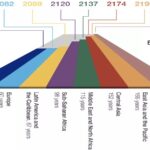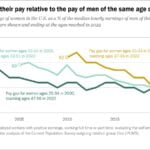We recently observed Labor Day with news from the Department of Labor that our nation lost 700,000 manufacturing jobs since Labor Day 2002. In fact, since Bush II took office, 2.5 million jobs have been lost, about 80,000 a month.
Higher-paying manufacturing jobs are disappearing at a rate unmatched since the Great Depression. Peaking in the late 1960s at almost 19.6 million manufacturing jobs, their disappearance has occurred at an average rate of 1.3 percent a year.
These jobs have been replaced mainly by governmental jobs (increasing the size of the bureaucracy) and service jobs (including retail). Government jobs have skyrocketed since 1970 to number 21.3 million in 2001, or 16 percent of all jobs. Service jobs in 2002 numbered 64.5 million, 59 percent of all jobs.
Considering that an average manufacturing job in 2002 paid $15.24 an hour for a 40.9-hour workweek, compared to the average retail salary at $10.04 an hour for a 29-hour work week (a difference of $334.61 a week), we can appreciate the extent to which the shift is dismantling the middleclass.
As the middleclass becomes an endangered species, CEO salaries, ironically, have increased at the expense of workers’ wages.
In 1975 corporate leaders made 44 times as much as the average factory worker. During the early 1980s, CEOs such as Goizueta of Coca Cola and Eisner of Disney convinced stockholders to link their compensation to company stock prices. By 1985, CEO salaries rose to 70 times the average worker.
A 2001 report published by the Institute for Policy Studies revealed that today’s corporate leaders make 531 times as much as the average factory worker. That is a 571 percent increase (before adjusting for inflation) since the 1990s alone. Worker pay, meanwhile, grew 37 percent–barely keeping up with 32-percent inflation.
The average pay for top executives at 365 major U.S. corporations is $13.1 million a year, while the average factory worker makes $24,668 a year. If workers’ annual pay had grown at the same rate as CEOs, their 2000 annual earnings would be $120,491. If the minimum wage had grown at the same rate as CEO’s earnings, it would have been $25.50 an hour instead of $5.15.
CEO salaries also outpaced the stock market and corporate profits. From 1985 through 2001, the average worker saw his or her pay increase by 63 percent, while the S&P 500 index rose by 443 percent. Over the same period of time, CEOs enjoyed a pay increase of 866 percent.
One might have expected CEO incomes to drop as the market took a bearish turn in 2000, based on the 1980s model of linking compensation to stock prices. This did not occur, however, because we have created an economic order described by George Will as “welfare capitalism,” where profits are privatized while losses socialized.
At the start of the down market, compensation rules were rewritten once it became obvious that production goals were not going to be met.
Take for example William R. Johnson, CEO of Heinz. At the close of the fiscal year ending in April 2003, he received a pay package valued at $8.8 million, a 47 percent raise over $6 million he earned the previous year, even though the performance of Heinz stock fell by about 20 percent during the fiscal year. Johnson’s compensation grew $2.8 million, while employees’ wages and stockholders’ profits suffered.
CEOs are additionally rewarded for laying off workers. Those CEOs who announced layoffs of 1,000 or more workers between Jan. 1 and Aug. 1, 2001, received 80 percent higher compensation (on average $23.7 million compared with $13.1 million) than CEOs of 365 top U.S. firms not announcing layoffs.
For example, Ebbers (CEO of WorldCom) laid off 6,000 workers while collecting a $10 million bonus. Eisner (CEO of Disney) earned $72.8 million while announcing 4,000 layoffs. Golub (CEO of American Express) laid off 6,600 workers while receiving a 22 percent pay raise. And Chambers (CEO of Cisco Systems) received a 40 percent pay raise while laying off 8,500 workers.
The new economic system established since the 1980s is known as “neoliberalism.” It essentially transfers wealth from the bottom of society to the top, creating a growing income disparity between the poor and rich. The process is carried out through the dismantling of social services, such as welfare, adequate education and health care, while increasing tax breaks for the wealthiest.
The greatest danger of neo-liberalism is the threat it poses to our democracy. When wealth in concentrated in the hands of the few, political inequality follows.
Miguel De La Torre teaches in the religion department at Hope College in Holland, Mich. His column appears in the Holland Sentinel.
Professor of Social Ethics and Latinx Studies at Iliff School of Theology in Denver, Colorado, and a contributing correspondent at Good Faith Media.





